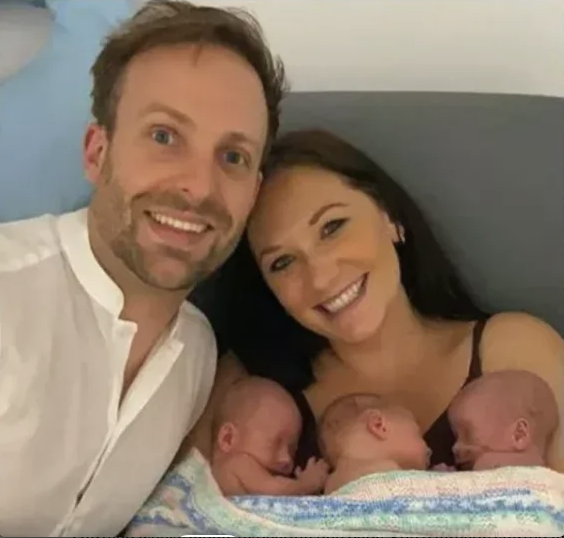
Gina walked into the ultrasound appointment the same way she’d walked into twelve others before it—routine, expected, just another checkmark on the pregnancy timeline. Thirteen weeks along, expecting one baby. She’d already started imagining the nursery, picking out names, preparing for the beautiful chaos of becoming a mother.
The technician moved the wand across her belly, eyes fixed on the screen. Then paused. Adjusted. Paused again. Called in another technician. Then a doctor. Gina’s heart began racing, not from excitement but from the sudden, suffocating fear that something was wrong.
“How many babies are you expecting?” the doctor asked carefully.
“One,” Gina answered, her voice barely steady.
The doctor turned the screen toward her. “You’re having three.”
Not just three. Three identical boys. Sharing a single placenta. Monochorionic-monoamniotic triplets—odds of one in 200 million. Rarer than winning most lotteries. Rarer than almost anything nature produces. And far more dangerous than any typical pregnancy.
The rest of that appointment blurred. Words like “high-risk” and “complications” and “specialized care” tumbled out in a cascade Gina couldn’t fully process. All she could focus on was the screen—three tiny heartbeats, three fragile lives intertwined in a way that defied medical textbooks. Three sons she hadn’t known existed ten minutes earlier, now depending on her completely.
The pregnancy became a daily act of faith. Every morning, she woke up wondering if all three hearts were still beating. Every doctor’s visit carried the weight of impossible statistics. Sharing one placenta meant competition for nutrients, for space, for survival. If one struggled, they all struggled. The medical team prepared for every possible outcome, assembling thirty specialists for the delivery—neonatologists, surgeons, nurses trained in miracles and worst-case scenarios.
Jimmy, Jensen, and Jaxson arrived premature. Tiny, fragile, fighting for every breath. Each boy was whisked away to his own team of specialists, intensive care tailored to individual needs despite their identical DNA. Gina and her husband stood in the NICU, surrounded by beeping machines and their three impossibly small sons, and wondered if bringing them all home was a hope or a fantasy.
Six weeks. That’s how long it took. Six weeks of tubes and monitors and prayers whispered over incubators. Six weeks of learning to breathe on their own, to eat, to regulate tiny body temperatures. Six weeks of Gina dividing herself between three cribs, three sets of needs, three miracles unfolding simultaneously.
And then, finally, they came home. All three. Beating the odds that had hung over them since that shocking ultrasound.
Now, at five months old, something even more remarkable is revealing itself. Despite sharing identical DNA—the same genetic blueprint down to the smallest detail—Jimmy, Jensen, and Jaxson are completely different people. One is calm, content to observe the world quietly. Another is already demanding attention, vocal and expressive. The third is somewhere in between, easy-going but curious. Same genes. Different souls.
It’s the kind of mystery that makes scientists reconsider everything they thought they understood about nature versus nurture. How can three people with identical DNA develop such distinct personalities? What invisible forces shape who we become beyond the code written in our cells? The boys are living proof that genetics alone doesn’t determine individuality—that somewhere in the space between biology and experience, something utterly unique emerges.
Gina watches them sometimes, these three miracles who defied 200-million-to-one odds, and marvels at the mystery of it all. She went to a routine ultrasound expecting one baby and walked out responsible for three lives that medical science barely understood. She survived a pregnancy that could have ended in heartbreak at any moment. And now she’s raising three identical boys who are somehow, beautifully, entirely themselves.
Jimmy reaches for toys with careful deliberation. Jensen yells for attention. Jaxson grins at everything. Same DNA. Different dreams already taking shape.
The odds said this shouldn’t have happened. The risks said they might not survive. But here they are—three boys, one impossible story, and a family that proves every single day that miracles don’t care about statistics.